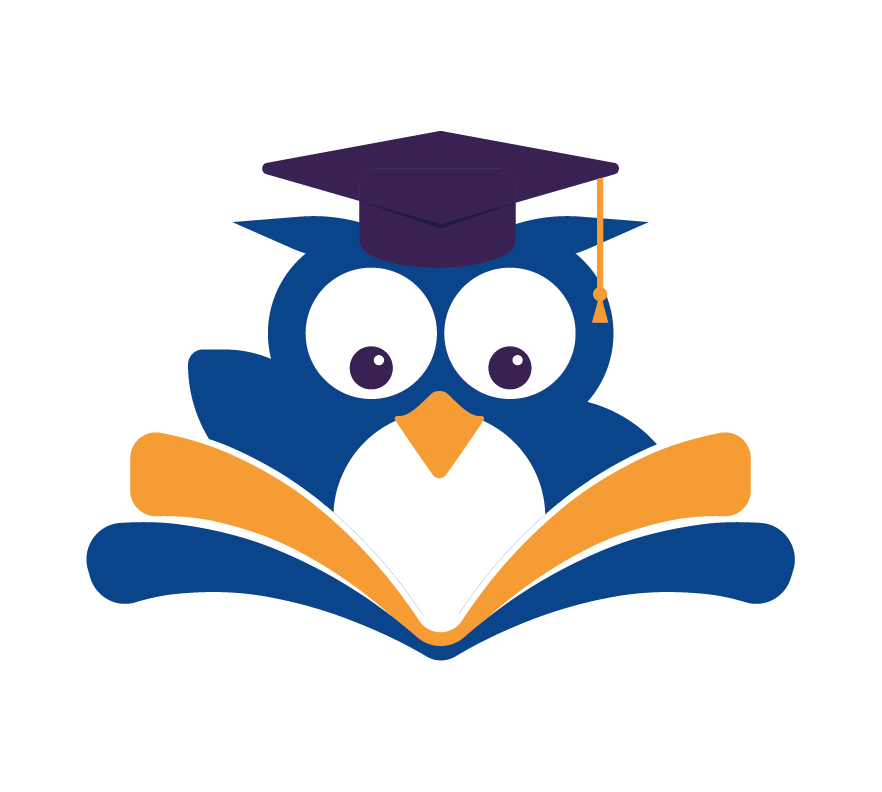Imagine being able to soak up information like a superhero, making learning easy! Becoming a “Learning Super Power Superhero” is possible, and we’re here to show you how. It’s not just about being smart; it’s about having a mindset that boosts your confidence and effectiveness.
Many of you want to make a difference and feel like a superhero. Our step-by-step guide will help you tap into your “Learning Super Power Superhero” and get the most out of learning.
Key Takeaways
- Discover how to become a learning superhero and unlock your full potential.
- Learn the steps to develop your learning skills effectively.
- Understand the importance of staying motivated throughout your learning journey.
- Get practical tips for improving your learning super power.
- Find out how to make learning an enjoyable experience.
What Are Learning Super Powers?
Unlocking your full potential starts with understanding the science behind super learning techniques. Imagine being able to absorb complex information quickly. You can retain it easily and apply it in real-life situations. This is not just a dream; it’s a reality achievable through accelerated learning methods and cognitive enhancement strategies.
The Neuroscience Behind Accelerated Learning
Our brains are capable of remarkable feats. But traditional learning methods often fail to tap into this potential. The key lies in understanding how our brains form new connections.
How Your Brain Forms New Connections
When we learn something new, our brain creates new neural pathways. The more we practice or revisit this information, the stronger these pathways become. This process is fundamental to accelerated learning methods.
Why Traditional Learning Methods Fall Short
Traditional learning often focuses on rote memorization, which can be ineffective in the long run. In contrast, cognitive enhancement strategies promote active learning, engagement, and practical application.
| Learning Method | Effectiveness |
|---|---|
| Rote Memorization | Low Retention |
| Active Learning | High Retention |
By understanding the neuroscience behind learning and adopting super learning techniques, you can significantly enhance your learning capabilities.
Assessing Your Current Learning Style
Before we explore the world of learning superheroes, it’s key to understand your current learning style. This step is vital in figuring out how to improve your study habits. It helps you become a more effective learner.
Take the Learning Style Assessment Quiz
To find out your learning style, we suggest taking a detailed quiz. This quiz will show if you’re a visual, auditory, or kinesthetic learner. Knowing your learning style is the first step towards optimizing your study habits.
Identifying Your Learning Strengths and Weaknesses
After taking the quiz, you’ll know your learning strengths and weaknesses better. This knowledge lets you focus on improving areas that need work. Remember, “You can’t build a reputation on what you’re going to do.”
“The way we learn is fundamental to who we are.”
Creating Your Learning Profile
With your learning style and strengths in mind, you can create your learning profile. This profile will guide you in tailoring your study approach to your unique needs. It’s a personalized roadmap to becoming a learning superhero!
The Mindset of a Learning Superhero
Becoming a Learning Superhero is more than just learning new skills. It’s about having a mindset that keeps growing and staying strong. You’ll need to work on having a growth mindset, beating learning anxiety, and using positive self-talk.
Cultivating a Growth Mindset for Continuous Improvement
A growth mindset is key for Learning Superheroes. It means you believe you can get better with hard work and dedication. By facing challenges and keeping going, you can boost your learning potential and make great strides.
Defeating Learning Anxiety and Self-Doubt
Learning anxiety and self-doubt can hold you back. To beat these, you need to build confidence and resilience. A good way is to use positive self-talk, which changes negative thoughts into positive ones.
Positive Self-Talk Techniques
Positive self-talk helps beat learning anxiety and self-doubt. Here are some ways to start:
- Change negative thoughts to positive ones.
- Think about your strengths and what you’ve achieved.
- Try mindfulness and meditation to calm your mind.
Using these methods daily can make you more positive and resilient. This will help you boost your learning potential.
Unlocking Your Learning Super Power Potential
To become a learning superhero, you need to tap into your inner capabilities. This means understanding the core elements of an effective learning system.
The Four Pillars: Focus, Retention, Application, and Reflection
The foundation of your learning super power lies in four critical pillars: focus, retention, application, and reflection. Each pillar is vital for efficient and effective learning.
Focus means concentrating on the task without distractions. Retention uses techniques like spaced repetition to remember what you’ve learned. Application is about using your knowledge, and reflection helps you see what works and what doesn’t.
Setting SMART Learning Goals That Stick
Setting SMART learning goals is key to achieving your learning objectives. SMART means Specific, Measurable, Achievable, Relevant, and Time-bound. These goals give you a clear path for your learning journey.
Creating Your Learning Roadmap
A learning roadmap is a visual guide to your goals and steps to achieve them. It keeps you organized and focused. Start by identifying your long-term goals, then break them into smaller tasks.
By following these steps and focusing on the four pillars, you can unleash your learning capabilities. This way, you can reach your full potential as a learning superhero.
Memory Enhancement Techniques That Work
Unlocking your memory’s full potential can change your learning journey. The right techniques can greatly improve how well you remember and recall information.
Building Your Personal Memory Palace
A memory palace, or method of loci, is a powerful way to remember things. You imagine a place you know well. Then, you link the information you want to remember to spots in that place.
Step-by-Step Memory Palace Construction
- Choose a place you know, like your home or school.
- Picture yourself walking through this place, noticing key spots or objects.
- Link the information you want to remember to these spots or objects.
- Practice walking through your memory palace, recalling the information at each spot.
Implementing Spaced Repetition Systems
Spaced repetition means reviewing material at longer intervals to lock it in your memory. It’s great for learning new words or formulas.
| Day | Review Material |
|---|---|
| 1 | Initial Learning |
| 3 | First Review |
| 7 | Second Review |
| 14 | Third Review |
Chunking Complex Information for Better Recall
Chunking breaks down complex info into smaller parts. This makes it easier to grasp and remember. For instance, breaking a long number into smaller groups can help you remember it better.
Using these memory techniques daily can greatly boost your learning. They’re useful for studying, learning new skills, or just improving your memory. These strategies can help you reach your goals.
Speed Reading Strategies for Information Mastery
Boost your reading speed and comprehension with our expert tips and techniques. In today’s world, reading quickly and retaining information is key.

Eliminating Subvocalization and Inner Monologue
Subvocalization, or reading out loud in your head, slows you down. To beat this, focus on the text’s meaning, not each word. Read in chunks, taking in groups of words at once.
Expanding Your Peripheral Vision Range
Expanding your peripheral vision is crucial for speed reading. This lets you see more at a glance. Use a pointer, like a finger or cursor, to guide your eyes. This helps you focus on the center and see more.
Top Digital Speed Reading Tools and Apps
Many digital tools can boost your speed reading. Spreeder, ReadMe!, and 7 Speed Reading are top picks. These tools let you set your own reading speed and track your progress. Try out different tools to see what works for you.
Using these strategies and tools can greatly enhance your reading speed and comprehension. You’ll become a more efficient and effective learner.
Note-Taking Methods That Supercharge Retention
Becoming a learning superhero starts with mastering note-taking. It’s not just about writing down info. It’s about understanding and keeping it.
Mastering the Cornell Method for Structured Notes
The Cornell method divides your paper into two parts. The left side is for keywords and questions. The right side is for your notes. This method enhances retention by making you actively engage with the material.
Creating Mind Maps That Capture Complex Relationships
Mind maps are visual ways to show information. They help you connect different ideas and concepts. This way, you can understand complex relationships better and retain info more effectively.
Digital vs. Analog Mind Mapping
You can choose between digital and analog mind mapping. Digital tools are flexible and easy to access. But, some prefer the hands-on feel of analog methods.
Note-Taking Apps and Digital Systems
Today, there are many digital note-taking apps and systems. Each has its own features and benefits. Tools like Evernote and OneNote can optimize your study habits and improve retention.
Using these note-taking methods can make you a learning superhero. You’ll be able to retain and use a lot of information.
Brain Training Exercises for Cognitive Enhancement
Unlock your brain’s full potential with our guide to brain training exercises! As we continue on our journey to becoming learning superheroes, it’s essential to incorporate exercises that enhance our cognitive abilities. Brain training exercises are designed to improve various aspects of cognition, including memory, attention, and processing speed.
Dual N-Back Training for Working Memory
One of the most effective brain training techniques is dual N-back training. This exercise involves identifying a visual and auditory stimulus that appears ‘N’ items ago in a sequence. By challenging your working memory, you can significantly improve your cognitive flexibility and ability to process information.
Cross-Lateral Movements to Activate Both Hemispheres
Cross-lateral movements are exercises that involve coordinating both sides of your body, such as touching your left hand to your right knee. These movements help activate both hemispheres of the brain, enhancing inter-hemispheric communication and overall cognitive function.
Daily Meditation Practices for Laser-Like Focus
Meditation is a powerful tool for improving cognitive enhancement. Regular meditation practices can help you develop greater control over your attention, leading to improved focus and mental clarity.
5-Minute Focus Meditation Guide
Here’s a simple meditation exercise to get you started:
- Find a quiet, comfortable spot to sit.
- Close your eyes and take a few deep breaths.
- Focus your attention on your breath, letting go of any distracting thoughts.
- When your mind wanders, gently bring it back to your breath.
- Continue for 5 minutes, gradually increasing the duration as you become more comfortable with the practice.
As the renowned mindfulness expert, Jon Kabat-Zinn, once said, “The best way to take care of the future is to take care of the present moment.”
“You can’t calm the storm, but you can calm yourself. The storm will pass.”
Optimizing Your Study Environment for Success
Your study space can either hinder or enhance your learning experience. A well-crafted study environment is essential for staying focused and achieving your academic goals.
Designing Your Distraction-Free Learning Zone
To create a distraction-free zone, start by decluttering your study area. Remove any unnecessary items that might divert your attention. Consider using a noise-cancelling headset or playing calming music to create an ideal atmosphere.

Optimizing Light, Sound, and Temperature Variables
Environmental factors like light, sound, and temperature significantly impact your ability to focus. Ensure your study space has adequate lighting, is at a comfortable temperature, and has minimal distracting sounds.
Productivity Tools and Browser Extensions
Utilize productivity tools and browser extensions to streamline your study process. Tools like website blockers and task managers can help you stay on track and avoid procrastination.
Nutrition and Physical Habits for Peak Brain Performance
To become a learning superhero, you need the right nutrition and physical habits. Your brain is like a high-performance machine. It needs the right fuel to work at its best.
Top Brain-Boosting Foods and Supplements
Eating brain-boosting foods can make you smarter. Foods like salmon and blueberries are great for your brain. Supplements like omega-3 and vitamin D are also important for your brain’s health.
The 20-Minute Exercise Routine for Cognitive Enhancement
Exercise is good for both your body and brain. A 20-minute walk or jog can greatly improve your brain function. It boosts memory and keeps your brain healthy by improving blood flow.
Sleep Hygiene Practices for Memory Consolidation
Sleep is key for brain performance. Good sleep habits, like a regular sleep schedule, help improve memory. Try to sleep 7-9 hours each night for the best brain function.
Implementing Your Personal Learning Super Power System
Now that you’ve found your Learning Super Power, it’s time to use it. Create a plan that boosts your learning potential. This plan should be structured but also flexible.
Creating Your Daily and Weekly Learning Routine
Make a learning routine that fits your life. Set aside specific times for learning each day and week. For example, spend 30 minutes each morning reviewing notes or reading a chapter.
Tracking Progress with Learning Metrics
Tracking progress is key to seeing what works and what doesn’t. Use a journal or app to keep track. You can track pages read, skills learned, or time spent learning.
| Metric | Weekly Target | Actual Progress |
|---|---|---|
| Pages Read | 100 | 120 |
| Skills Mastered | 3 | 4 |
| Learning Time (hours) | 10 | 12 |
Strategies for Breaking Through Learning Plateaus
Hit a learning plateau? It’s normal. Try new learning methods, ask for feedback, or take a break. Change your routine to break learning plateaus and keep growing.
Conclusion: Maintaining Your Learning Superpowers for Life
You’ve unlocked your learning superpowers, and now it’s time to keep them sharp! Remember, keeping your abilities sharp is just as important as developing them.
By using the techniques and strategies from this guide, you’ll unlock your full learning potential. Stay committed to your goals and don’t be afraid to try new things. It’s all part of becoming a learning superhero!
As you move forward, share your knowledge and inspire others to start their own learning journeys. This will not only help you understand more but also positively impact those around you.
So, keep learning, stay curious, and remember – your learning superpowers are for life!

